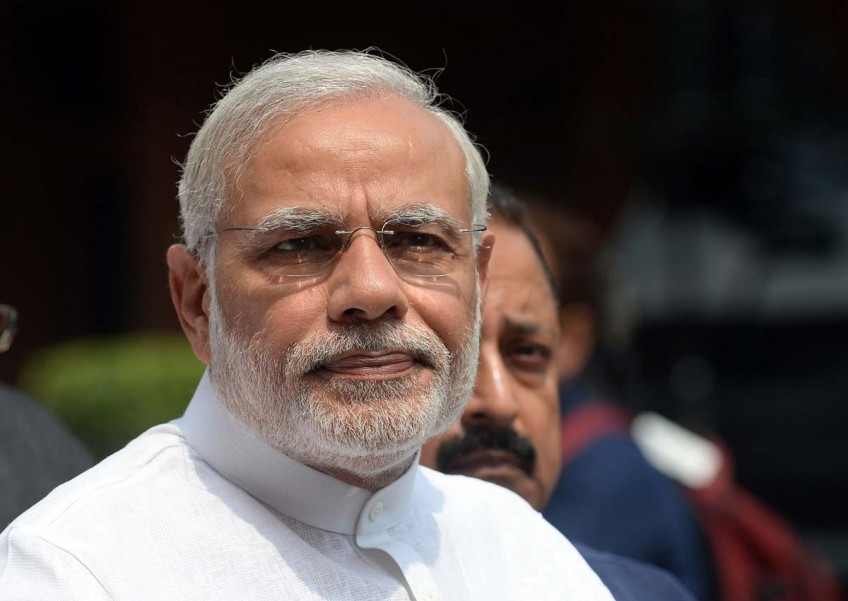Modi looks east

PRIME Minister Modi's first year in office was remarkable for his pursuit of a highly- robust foreign policy. He travelled to various parts of the world and engaged a wide cross-section of countries and their leaders.
These included his travels to the Asia-Pacific region, particularly the US, Canada, Australia, Japan, Korea and China. He also travelled to South-east Asia to attend the India-ASEAN summit in November 2014.
One of the high points of Mr Modi's foreign policy is his enunciation of India's desire to play a more active role in global and regional affairs. A key example of this is his articulation of the "Act East" policy.
The "Act East" policy is expected to be a more action-oriented and purposeful edition of the "Look East Policy" (LEP) that has been the guiding vision of India's engagement with South-east Asia.
The new policy is likely to begin a new chapter in India's engagement with the region and the individual countries.
The exact content of the "Act East" policy will become clear over time as India deepens its interaction with various countries of the region.
But the announcement of the policy is a clear signal of India's priorities with respect to South-east Asia.
During the last two decades, since the announcement of the LEP in the early 1990s by then-Indian prime minister P.V. Narasimha Rao, India's engagement with South-east Asia has increased rapidly.
The most prominent part of the engagement has been the proliferation of business and economic links. Several countries in the region are now important trade and investment partners of India.
The most prominent among these is Singapore. The other important partners are Malaysia, Thailand and Indonesia.
The current year marks the 50th year of India-Singapore diplomatic ties. As one looks back at the relationship, it becomes clear that the last decade has been particularly important in the India-Singapore relationship.
This was the time when India signed a Comprehensive Economic Cooperation Agreement with Singapore, which was the first comprehensive trade and investment agreement it signed with any country.
The agreement has been a great enabler in promoting trade and business between Singapore and India.
Now, Singapore and India not only have a healthy trade relationship, they have also become major sources of investment for each other.
Singapore is one of the largest sources of foreign direct investment (FDI) for India.
On the other hand, Singapore is the largest recipient of outward FDI from India.
Trade and investment apart, both countries have robust people-to-people exchanges with both business and leisure tourism having increased sharply.
Much of this has been possible due to the rapid increase in air connectivity between Singapore and major Indian cities.
Aviation capacities will be increasing further with Tata-SIA airline Vistara having commenced operations.
Singapore would, undoubtedly, be a vital cog in the successful pursuit of India's "Act East" policy. There are several reasons for this.
Economics and business will continue to be the fundamentals of the "Act East" policy and India's deeper engagement with South-east Asia.
Singapore has a significant role in facilitating this engagement.
The role of Singapore as a shipping hub becomes critical for India in expanding its commerce with not only South-east Asian countries, but also other Asia-Pacific countries like China, Japan, Korea and Australia.
A considerable part of India's sea-borne trade with these countries is routed through Singapore.
The importance of Singapore as a transshipment location will increase further given that these countries, along with ASEAN and India, are negotiating the Regional Comprehensive Economic Partnership - a large free-trade agreement coming up in the region.
The significance of Singapore's role as an efficient intermediary in facilitating India's strategic links with South-east Asia is not limited to only shipping. Singapore is one of the most important financial hubs of the region.
The presence of almost all major global banks and financial institutions in Singapore makes it an ideal country for routing financial transactions.
Spike in Indian companies in S'pore
Indian companies and businesses have benefited from the presence of intermediary banks in Singapore enabling them to effectively participate in global financial transactions.
This has not only helped Indian companies raise funds from the region but also expand their business transactions with various other parts of the world.
This is one of the important reasons behind the rapidly-growing number of Indian companies in Singapore.
From a Singapore perspective as well, India is a country offering prospects of higher returns on investment in several areas that reflect Singapore's comparative advantages.
These include development of smart cities, providing urban solutions and skill development.
Indeed, greater involvement of Singapore in India's development story would energise the bilateral economic ties and impart greater strength to India's engagement with the region.
As India imparts a stronger push to its ties with South-east Asia, Singapore will remain a major factor in making the push effective.
In a sense, therefore, it is ideal that India's decision to adopt a more action-oriented policy towards South-east Asia has come at a time when both countries are celebrating five decades of their relationship.
Dr Amitendu Palit is senior research fellow and research lead (Trade and Economics) at the Institute of South Asian Studies (ISAS) in the National University of Singapore.
The views are personal.

Get a copy of tabla! for more stories.